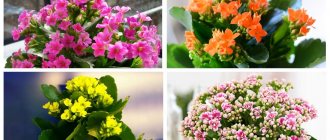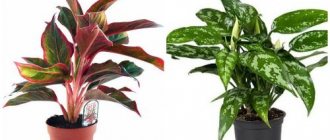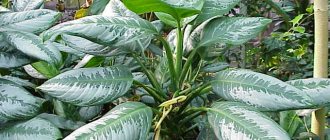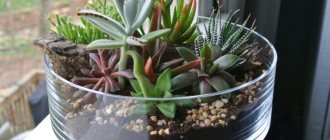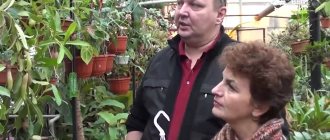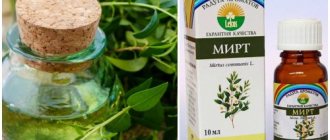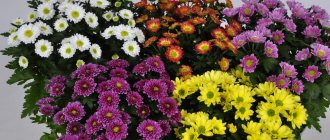Kalanchoe is a plant of the Crassulaceae family. In nature, there are about two hundred species that grow in South America, tropical regions of the African continent, and Madagascar. These plants are very diverse in height, shape of leaves and flowers, but they are all excellent helpers in the treatment of various diseases. After all, they are also called the tree of life or indoor ginseng.
Appearance
Varieties of Kalanchoe share several main external characteristics:
- the root system is fibrous, with a short and branched rhizome; the roots are located in the upper part of the soil;
- dense, succulent stems are abundantly covered with foliage;
- the shape of the leaves varies depending on the type of succulent: oval, jagged, heart-shaped, narrow or lobed;
- the leaves are fleshy, rich green, less often dark purple;
- flowers are united in paniculate inflorescences, about 10 specimens in each inflorescence;
- the tree of life blooms with buds of yellow, red, white, purple or orange; flowers four-membered, erect or drooping;
- bears fruit with multi-seeded leaflets.
Most varieties of Kalanchoe grow and develop well under the supervision of plant growers.
Varieties, forms, cultivars
Breeders have developed several varieties of felt Kalanchoe, with Chocolate Soldier being especially attractive. This is a compact dense bush, up to 25 cm high. The fluffy leaves have an intense orange-chocolate color along the edges.
Some others:
- Kalanchoe tomentosa 'Silver Panda' (most common)
- Kalanchoe tomentosa 'Teddy Bear' (with rounded yellow-brown leaves with chocolate markings on the edges)
- Kalanchoe tomentosa 'Cinnamon' (reddish brown)
- Kalanchoe tomentosa 'Black Tie' (a brighter, lighter version of Silver Panda)
Bibliography:
- International Crassulaceae Network, https://www.crassulaceae.ch/
Types of Kalanchoe domestica
Not all varieties of Kalanchoe have been “domesticated” and submitted to humans. The most popular among plant growers are 20-30 varieties, in particular hybrid ones.
Bentha (Kalanchoe bentii)
This subshrub, up to 1 m high, comes from the Arabian Peninsula. The succulent has oval, large and thick leaves. Blooms with red, white, lemon flowers. This variety begins to bud in mid-spring.
Cirrus (Kalanchoe pinnata)
A large crop up to 1 m high. Rich green oval leaves are rounded at the edges. The buds are of an unusual shade - the white tone softly flows into green. The flowers are grouped into inflorescences and hang in clusters.
Beharskoe (Kalanchoe beharensis)
A native of Madagascar, it is distinguished by its large height - up to 3 m - and bizarre leaf shapes. The surface of the plates seems to be smeared with grayish wax.
The apical shoots are covered with inflorescences with small buds. Blooming Kalanchoe Beharskoe is covered with red, orange and pale yellow buds. The crop tolerates drought well, but develops better in late autumn and winter.
Large-flowered (Kalanchoe grandiflora)
The homeland of this succulent is India. Outwardly it resembles a variegated variety, but the leaves of the large-flowered Kalanchoe do not have a pronounced pattern.
Grows up to 50 cm in height. The stem grows upright, with light green leaves clustered around it. If the large-flowered tree of life grows directly under the sun, the leaf blades gradually turn pink.
Flame (Kalanchoe flammea)
Culture from the rocky Somali expanses. The leaves resemble an inverted egg, the plates are thinner at the base. The buds are bright orange and deep red.
The flame succulent does not exceed 40 cm in height and does not branch. This is one of the most capricious and demanding varieties to care for.
Blossfeldiana (Kalanchoe blossfeldiana)
A common species, reaches a height of 40 cm. The stems are weakly branched, the leaves are ovate, dense, edged with red. Miniature buds are grouped into multi-flowered inflorescences.
Kalanchoe Blossfeld has several varieties. In nature, this culture blooms with red buds. But experts have managed to develop hybrids with other shades of flowers.
Varieties with simple flowers
Some varieties of Kalanchoe Blossfeld bloom with small flowers with 4 petals. These include:
- This crop has unusual leaves of a light green hue, covered with pink, cream, white stripes and chaotic spots. The edges of the plates are decorated with a reddish border. The variety blooms with coral or red buds.
- Shell Pink. Up to 60 buds can develop simultaneously on each peduncle. The greenish-white shade of the petals gradually turns into soft pink.
- Orange Triumph and Tom Thumb Tetra. Representatives of these varieties grow up to 30 cm in height. The leaves are large, wide, the flowers resemble small stars in orange and red tones. Both varieties are suitable for decorative home decoration.
Most varieties of Kalanchoe with simple flowers are used for decorative purposes. They look no less impressive than when combined with double flowers.
Varieties with double flowers series
The flowers of some varieties of Kalanchoe look like small roses. Terry is formed due to the number of petals - some varieties have up to 32 pieces on one flower.
Kalandiva
A greenhouse variation of Kalanchoe Blossfeld, but unlike its parent, it is more compact. The peculiarity of this variety is its lush double flowers.
20-50 buds grow on one succulent stem. The maximum height of the plant is 30 cm. There are 2 subspecies of the variety:
- Mix. A miniature bush decorated with small lush flowers of different tones: orange, yellow, red, white.
- Mini. A small bush with numerous shoots and round, thick leaves. Buds red, yellow, pink.
Kalandiva blooms for a long time - up to six months, starting in February.
Rosalina
A distinctive feature of this variety is double flowers and rounded glossy leaves. The blooming delicate buds are yellow, purple, white or pink. Rosalina grows up to 30-40 cm.
Roseflower
A hybrid variety with small buds that are grouped into inflorescences. Double flowers are similar to miniature rose flowers in yellow, pink and white. Roseflower grows up to 30 cm in height.
Mangina (Kalanchoe manginii)
Growers often grow this variety in pots. As they grow, Mangina shoots droop, reaching 40 cm. The leaves are round, purple or green. Pink bell flowers hang from the stems in clusters. Miniature Mangina rarely grows above 15 cm.
Tomentosa (Kalanchoe tomentosa)
The variety is also called tomentosa. Succulent up to 45 cm high with erect stems. Due to the bizarre shape and fluff on the leaves, tomentosa is also called “cat ears”.
In nature it blooms with small pubescent bell-shaped flowers. Even with very good care, it produces buds very rarely.
Paniculaceae (Kalanchoe thyrsiflora)
Grows up to 50 cm in height. The leaves are white-silver, rounded at the ends. Leaves are more common at the bottom than at the top.
The type of inflorescence is a panicle, yellow buds with miniature petals. Kalanchoe thyrsiflora blooms in late April - early May.
Trumpetflower (Kalanchoe tubiflora)
Large succulent, reaches 60 cm in height. The stems are long and thin. The leaves with a greenish tint are decorated with brownish and grayish spots. Numerous buds are colored in red, violet, lilac, white and pale yellow.
Daigremontiana (Kalanchoe daigremontiana)
Also called Kalanchoe bryophyllum. A large succulent grows up to 50 cm in height. The front side of the leaves is gray-green, the back side is bright green. The leaves are covered with purple pigments. The inflorescence is paniculate; the succulent most often blooms in winter with pinkish and purple buds. It is not easy to “persuade” representatives of this variety to bloom at home.
479 photos of different types of succulents and rules for growing them at home
On a note. Kalanchoe degremona reproduces in a very interesting way. Buds appear in the gaps between leaf teeth in winter. Gradually, shoots with small aerial roots develop from them. When they mature, they fall into the ground, after which their new life cycle begins.
Marble (Kalanchoe marmorata)
This variety is distinguished by wide and variegated leaves, similar to an inverted egg. For this feature, marble Kalanchoe is also called variegated. The leaf blades are covered with brown, green, purple, brown dots.
The variety's homeland is Ethiopia. The decoration of the marble variety is not only bright leaves, but also white flowers with 4 petals.
Dissected (Kalanchoe laciniata)
This variety of Kalanchoe is called differently - lobed, dissected, “sea of gold”, laciniata. The culture is distinguished by its original feathery leaves: their surface seems to be waxed, and the edges of the plates are serrated. For these unusual branched leaves, the plant is also called “deer horns”.
The fleshy, juicy stems initially grow vertically, but gradually begin to droop. Yellow or orange flowers of a simple shape, with 4 petals, are arranged singly.
Tessa (Kalanchoe Tessa)
One of the most attractive varieties of Kalanchoe. It grows up to 30 cm high. Tessa is a variety of Kalanchoe Mangini. The shape of the stems is creeping, such a plant will look advantageous in a hanging pot. The bell-like drooping flowers are large, up to 2 cm. The orange buds look attractive against the background of green oval leaves.
Alochoe (Kalanchoe porphyrocalyx)
Also called purple-colored. A unique variety of the tree of life: can grow in almost any environment.
The succulent climbs tree trunks or settles on rocky soils. Bell flowers are painted in 2 colors: purple and yellow.
Lucy (Kalanchoe luciae)
Kalanchoe Lucy (Lucia) is a crop with hard, large leaves. A bluish coating is visible on the upper plates, while the lower plates are purple and green in color.
Lucia leaves are placed vertically. The culture blooms with white flowers in the third year of life. May wilt after flowering.
Dwarf (Kalanchoe pumila)
The Tree of Life, originally from Madagascar, is a true Lilliputian among other varieties. The shrub rarely grows more than 20 cm in height. The erect stems droop as the succulent grows.
The leaves look like a fan with a wavy edge. The plates of a young plant are dark green, gradually turning purple or brown. The buds are bright, pinkish-violet.
Serrated Kalanchoe (Kalanchoe serrata)
Tall variety with erect stems. The triangle sheets are painted in light green tones. If the succulent grows under the sun, the leaves will change color to pink or purple.
The culture blooms with tubular buds, pink or orange. The zurben variety is viviparous, like the degremona variety.
Light green (Kalanchoe laetivirens)
The crop is up to 30 cm high. The leaves are oval, the plates are uniform, light green. It blooms with miniature yellow-orange buds.
A light green variety, like degremona or jagged, viviparous. In Kalanchoe laetivirens, brood buds appear between the teeth along the leaf edge.
Fedchenko (Kalanchoe fedtschenkoi)
It grows up to 30 cm in height. The dark green leaves are thick, oval, and toothed. If the flower grows in the sun, the leaves become pinkish around the perimeter.
Kalanchoe Fedchenko blooms with drooping bell-shaped buds. The flowers are of an unusual shade - pinkish-salmon.
Spreading (Kalanchoe prolifera)
Madagascar succulent is almost 2 m high. The young culture has strong and erect stems. Gradually, the plates under the stem fall off, and only the top remains covered. The succulent blooms for the first time at 3-4 years of age. The buds are beautiful, miniature yellow-orange.
Marnier (Kalanchoe marnieriana)
A subshrub with fleshy leaves grows on the rocks of Madagascar. The Marnier variety grows up to 50 cm tall.
The oval leaves are colored pinkish-lilac in winter, which makes the bush attractive. Reddish or orange buds droop down.
Loose-flowered (Kalanchoe laxiflora)
Another native of the rocks of Madagascar, up to 50 cm high. It is distinguished by the original color of its leaves. Their base is bluish-green, and along the perimeter the plate is surrounded by a red-brown border. Some varieties have completely red plates. This succulent resembles Kalanchoe Mangina, but the loose-flowered version is larger in size.
The ovoid leaves are decorated with serrations. The buds delight the eye with orange-lilac, pinkish-violet and red tones.
Gastonis bonnieri (Kalanchoe gastonis bonnieri)
Also called yellow Kalanchoe, it is a native of Madagascar. It is called “donkey ears” because of the unusual shape of the leaves. It reaches a height of 50 cm.
The tender leaves are colored brownish or red, and the upper young plates are silvery. In February, yellow buds shoot out on the flower stalks.
Sinsepala (Kalanchoe synsepala)
A succulent that has managed to adapt to any weather conditions. Grows on uneven rocky soils and slopes. Large serrated leaves are edged along the perimeter with burgundy.
White or pinkish small buds form on panicle inflorescences.
Kalanchoe figuereidoi
A crop that grows up to 1 m in height. Greenish-gray leaves bloom in the form of rosettes. The edges of the plates are surrounded by a purple border. It is due to this unusual coloring that Kalanchoe resembles a partridge. In winter, the color of the leaves is brighter.
“Partridge” blooms in winter with small pink buds.
Hilderbrandt (Kalanchoe hildebrandtii)
Shrub up to 40 cm high. Silvery leaves look like coffee spoons. Bright orange large buds stand out in an original way on the unusual leaf plates.
Botanical description and history
This plant belongs to the guardians of the hearth. It absorbs all negative energy and smoothes out conflicts in the family. By bringing Kalanchoe becharis into your home, you can cleanse the air of harmful impurities. In addition, the flower is also medicinal.
In its natural environment, the plant grows in Southeast Asia and Madagascar. It is distinguished by a thin stem with a fluffy surface, the length of which is 40 cm. The leaves have the shape of a triangle with pronounced teeth. Their color is olive.
Flowering occurs in June-July. The flowers are small, pale yellow in color. Beharsky Kalanchoe needs pruning during the care process, since over time its leaves remain only at the top. This problem can be solved by pruning and replanting the flower.
This is an upright shrub, which is popularly called “cat ears” . It is distinguished by drooping shoots and sessile leaves of an oblong-ovate shape. The inflorescences are shaped like umbrellas. The flowers are small in size, they consist of a corolla tube and petals, the length of which is 12 mm.
Features of Kalanchoe tomentosa in abundant flowering. In nature, this variety grows in the south of the Arabian Peninsula. Flowering occurs in April-May. You can grow ornamental crops at home or in a cool room.
We have prepared a lot of useful information for you about the following types of Kalanchoe: Degremona, Mix, Don Sergio, Garden, Laciniata, Kalandiva. You can also read the description and tips for caring for medicinal and flowering plant varieties.
Conditions for keeping Kalanchoe
The Kalanchoe succulent is considered an unpretentious and hardy plant. But some nuances of caring for it still exist.
Temperature
The tree of life is a crop resistant to temperature changes. At temperatures above 10 C°, Kalanchoe can be taken out into the air. On warm summer and autumn days, the succulent is comfortable on the balcony. And although the tree of life also tolerates heat well, in the summer it is worth increasing the frequency of watering.
The optimal temperature in winter is 12-16 C°, in summer – 23-25 C°.
With the onset of winter days, it is better to lower the air temperature in the room where the Kalanchoe lives. This way the plant will gain strength for future flowering. This condition is not necessary, but if it is not observed, the flowers will be small and inconspicuous. You should not allow the temperature to drop below 10 C° - in such cold the succulent can get sick.
Humidity indicators
This plant suits medium humidity. Kalanchoe will easily tolerate short-term increases in humidity or short periods of drought. Also, you should not settle it next to crops that themselves know how to humidify the air (for example, spathiphyllum).
Lighting
Kalanchoe loves sunlight, but to grow and bloom it only needs to be in the sun 6-8 hours a day. Here you need to find a balance - darkness is destructive for a succulent just like direct rays of the sun. The culture grows best in the partial shade of the western part of the room. The south-eastern or eastern side is suitable for flowering crops.
In winter cold, when the sun's rays are not too aggressive, Kalanchoe can be placed on the south side - the plant needs additional light. If it is not possible to move the pot to the south, it is better to illuminate the flower with lamps.
Where to keep
You should not place the tree of life in the back of the room - here the succulent will lose its decorative properties. The buds will fade, the color of the leaves will lose their saturation, and the succulent will not bloom for long.
In summer, it is better to move Kalanchoe to a veranda or balcony. Fresh air will cool the leaves, the flower will not suffer too much from the bright sun. In other seasons, it is better to place it close to windows - this way the succulent will receive the amount of light it needs.
Care errors
If you care for Kalanchoe incorrectly, certain problems may arise:
- The bush doesn't bloom. This may be a consequence of too much fertilizer or too much daylight.
- The leaves curl. The cause may be thrips or leaf rollers. The bush needs to be treated with insecticides or miticide.
- Brown spots on leaves. Appear from excess ultraviolet radiation. Reduce daylight hours for your pet.
- Black spots on leaf blades. They provoke fungal diseases. The temperature in the room should be increased and the humidity reduced.
- Leaves are falling. Move the flowerpot away from the radiator or other heating source.
- The leaves turn yellow and dry out. Due to improper lighting.
- Withering of a flower after flowering. Urgent feeding or replanting is required.
Caring for Kalanchoe at home
Kalanchoe needs proper watering, fertilizing and pruning.
Priming
Kalanchoe grows well in fertile soil with a slightly acidic or neutral reaction. To prepare the substrate, you need to mix humus, sand, peat, turf and leaf soil in equal proportions. You can also use universal soil by adding expanded clay or perlite.
Pot
For Kalanchoe, a ceramic or plastic container with protrusions on the bottom is suitable. The succulent also feels good in clay pots. The main thing is that there is enough free space in the future home.
Dimorphotheca from seeds: 5 useful growing tips
You cannot transplant a small Kalanchoe into a large pot in the hope that the succulent will grow over time. The plant will spend all its vital energy on root growth and will leave nothing for the buds. It is unacceptable to grow the tree of life in the same pot with other plants.
Watering
The tree of life accumulates moisture in its leaves and withstands drought. Excessive watering and stagnation of water cause the roots to rot. This is dangerous for the development of fungi and rot. Therefore, Kalanchoe needs to be watered abundantly to moisten the entire lump of earth. But the remaining moisture needs to be drained. The frequency of moistening depends on the soil moisture - the soil must have time to dry between waterings.
In winter, the plant is watered every 10-14 days, in summer - once a week.
When watering, water should not fall on the leaves.
Spraying
Kalanchoe does not need additional heavy spraying. The tree of life can be given a cool shower, but only in the intense summer heat. Periodically, the sheets can be wiped with a damp cotton pad. This procedure will be quite sufficient for the succulent.
Fertilizer
Hardy Kalanchoe, unlike other indoor crops, does not require frequent feeding. The tree of life can be fed with cactus fertilizer once a month. It is better to do this between June and October. This way the succulent will store nutrients for future flowering.
The fertilizer should not contain a lot of nitrogen, otherwise the Kalanchoe may rot.
Trimming
For better development of Kalanchoe, pruning is necessary. After flowering, the flower stalks are cut as low as possible so that the remaining parts do not rot. The plant no longer needs them and only consumes the nutrients and energy of the Kalanchoe.
To prevent the crop from growing, in the summer you need to pinch off the tops at the growing point. This procedure stimulates the growth of lateral stems. Otherwise, the flowers will accumulate only at the top. After pinching, the plant looks more beautiful and lush. To make the Kalanchoe even more lush, you need to wait until the side shoots produce 4-5 leaves. Then the pinching procedure is repeated.
An ordinary stationery knife with a sharp blade is suitable for trimming. It must be disinfected before use.
Transfer
The plant is replanted when it becomes crowded in the pot. You can relocate a Kalanchoe if it has suffered from excessive watering, exposure to pests, diseases, etc.
Transplant stages:
- Prepare a container of suitable size. The diameter of the new home should be several centimeters larger than the previous one. You should not take a container that is too spacious - you will have to wait a long time for the buds.
- Lay out drainage as the first layer: expanded clay, crushed stone, stones.
- Carefully remove the plant from the old container.
- Carefully examine the roots to see if there are any damage or symptoms of disease. Damaged or diseased specimens are removed. The cut areas should be washed with a solution of potassium permanganate.
- The succulent is placed in a prepared container and covered with soil to the desired level. The earth does not need to be compacted too hard, just press it with your palms.
- Water the flower with water mixed with a growth stimulator.
It is believed that it is better to root the tree of life into a new container in March. During this period, the succulent usually fades and “moving” will not be stressful for it.
Nuances in winter
How to care for the tree of life in the cold season:
- there is no need to place the culture in a place that is too warm;
- watering is reduced to once every 2-3 weeks;
- the plant still requires light 6-8 hours a day, then complete darkness;
- If a grower starts a young Kalanchoe in winter, it needs to be pinched at the top for intensive growth in width.
From February to March, most varieties of Kalanchoe begin to bloom. Conditions for crop care are changing.
During flowering
You need to care for blooming Kalanchoe according to the following algorithm:
- water moderately (moisten when the soil is completely dry);
- provide lighting mode (daylight hours 6-8 hours);
- protect the succulent from cold and drafts;
- trim off wilted leaves and flower stalks.
During the flowering period, fertilizing is applied once a week, but the portions of fertilizers are reduced.
Rest period
Kalanchoe rests in the second half of autumn, accumulating strength for future flowering. During this period, it is better to reduce the air temperature in the room to 15-16 C°. Gradually you need to stop applying fertilizers. Watering becomes rare and less abundant.
100% way to make Kalanchoe bloom
As a rule, if you create conditions acceptable for Kalanchoe and properly care for it, buds will form at the right time. But sometimes, despite all the visible positive preconditions, it still does not bloom. There is a surefire way to get a capricious green pet to produce flower stalks.
The first buds appeared on Kalanchoe
To do this, the plant is forced into a state of hibernation:
- All stems are cut off radically, almost to the very base.
- Place the pot in a dark place for 4-6 weeks. You can put it in a closet, pantry, etc. It is better to wrap it in a thick fabric that does not allow light to pass through.
- Maintain the temperature around +15 °C.
- Stop watering and do not apply fertilizers.
- After the required time has passed, the flower is returned to its original place.
- They create a short daylight hours - no more than 8 hours, for which the plant is covered with a cap made of thick paper or a cardboard box.
- Raise the temperature to +18…+20 °C.
- Water at intervals - once every 10 days, after the substrate dries.
- Feed with specialized mineral compounds for succulents (according to instructions).
After such shock therapy, Kalanchoe blooms after a short period of time.
Reproduction of Kalanchoe
Kalanchoe is propagated by cuttings and leaves, less often by seeds.
Cuttings
For this type of propagation, shoots with a length of at least 8-12 cm are chosen. The apical shoots take root best. Cuttings can be carried out in two ways:
- Cut the cutting from the parent, set aside for a day to dry, remove the lower leaves. Moisten the soil in the pot and plant the cuttings in it. The succulent takes root after 2-3 weeks.
- Prepare the cuttings as described above. Dip it in water half the length of the stem. The water container should not be exposed to direct sunlight. After 2-3 weeks, when the roots appear, the shoot can be moved to a permanent place.
Leaf
Even a novice florist can do this procedure. The Kalanchoe leaf is cut and planted in well-moistened soil. A “dome” is constructed from a glass jar on top. The roots develop after 3-4 days. After this, the succulent begins to grow quickly.
For planting, you can take fallen, but not yet dried leaves. But they are first placed in a glass of water and transplanted into the soil after the roots appear.
Seeds
This method is suitable for the cool season. The seeds are scattered on top of the soil, without deepening them, but only lightly pressing them. Water with a small stream of water - a small depression will be created in the soil. The seeds are covered on top with glass or a small piece of cloth. Future sprouts are protected from sunlight.
After the shoots emerge, they are moved to a box, which is covered with polyethylene on top. You can plant sprouts in separate small pots only when 4-5 leaves appear on them. New kalanchoes will bloom in about a year.
Peculiarities of propagation of various varieties of living trees
Methods of propagation of Kalanchoe depend on the plant variety. Kalanchoe Degremona, Cirrus and Tubiflora are easily propagated by any method - cuttings, leaf rooting, children and offspring.
The Blossfeld and Mangina varieties can be propagated by cuttings, suckers and seeds, and the resulting plants will retain all the characteristics of the variety.
Kalanchoe Felt is easy to multiply with leaf and stem cuttings and seeds. Paniculate-flowered Kalanchoe well increases its population with axillary buds formed after flowering.
Photo gallery: Kalanchoe varieties
Felt Kalanchoe propagates well by seeds, leaf and stem cuttings Kalanchoe pinnate can be propagated by cuttings, leaf rooting, children, offspring The offspring of Kalanchoe Degremona can be easily obtained by offspring and cuttings, children and leaf rooting Kalanchoe Blossefeld is propagated by seeds, suckers and cuttings Kalanchoe Ka Landiva (dwarf variety of Kalanchoe Blossefeld) are propagated by stem cuttings. Reproduction by suckers, cuttings, seeds - any of these methods is suitable for Kalanchoe Mangina, the resulting plants will retain all the characteristics of the variety. At home, Kalanchoe Rosalina can be propagated using leaf and stem cuttings, the rooting of which is carried out in water or moistened sand Kalanchoe tubiflora without with special difficulty, they are propagated by cuttings, suckers, leaf rooting, and children. Kalanchoe paniculata is best propagated by axillary buds
Frequent illnesses
With proper care, Kalanchoe rarely gets sick. But from time to time, the succulent can be affected by gray mold or powdery mildew.
Powdery mildew
A dangerous fungal disease occurs from excessive humidity. Kalanchoe affected by powdery mildew begins to shed its leaves and then dies completely. At the first suspicion of a disease, the gardener should begin to treat the tree of life. Powdery mildew is an infectious disease and can quickly spread to other green plants.
The sick plant must be isolated from the rest of the household. The disease is fought with fungicides Aktarofit, Fitoverm, etc.
Gray mold
It is impossible not to notice this fungus - it spreads to all parts of the plant. Brown watery spots are visible on the stems, and grayish dust accumulates in small piles on the leaves.
Gray mold affects plants that have been watered incorrectly or irregularly. That is why it is important to prevent constant stagnation of moisture in the soil. Fallen leaves must be removed from the pot to prevent the development of fungus. The soil is partially replaced, the Kalanchoe is treated with a fungicide and placed closer to the light.
Actellik and Commander are suitable medications. They treat the plant twice with an interval of 2 weeks. Solutions are prepared according to instructions
Kalanchoe paniculataflora: features of the name
The generic name "Kalanchoe" comes from the local name of one of the species of these succulent herbs or shrubs in one of the provinces of China. According to another version, the name comes from two Chinese words “to fall” and “to grow.” This is also very plausible, because daughter bulbs often form on the leaves of the plant, which, upon contact with the ground, quickly grow roots and turn into a full-fledged plant.
Kalanchoe received the specific name “paniculate-flowered” due to the lush panicle inflorescences that appear on the plant during the flowering period.
Major pests
In addition to diseases, Kalanchoe can be attacked by insect pests.
Aphid
It settles on the leaves of the tree of life and feeds on their juice. It can get on the plant from other crops, clothes and shoes of household members, or even fly out the window.
Small accumulations of harmful insects are removed with a solution of soapy water (combine laundry soap with water in a ratio of 1:6). A large number of aphids are destroyed with special preparations: Actarofit, Actellik, etc.
Shchitovka
Mobile small insects whose body is covered with a waxy shield. Kalanchoe affected by cabbage cannot develop normally - it misses flowering and sheds yellowed leaves. Like aphids, scale insects settle on the lower part of the leaf.
Brown bugs can be seen when examining a succulent. You can remove pests from the leaves with your hands or wipe the green plates with alcohol. Next, the Kalanchoe is washed with soapy water and treated with an insecticide.
Osteospermum for seedlings: 5 useful tips for growing a flower
Spider mite
It entangles plants with a white coating that resembles a cobweb. The leaves begin to harden and brown spots appear on them. To combat ticks, use the drug Fitoverm or use a soap solution.
Mealybug
The pest feeds on the sap of the tree of life. Provokes the growth of black mold. Settles on new shoots and leaf axils. The main sign of mealybug infestation is a white waxy coating on the leaves.
Parts of the plant affected by the scale insect are removed. The leaves are sprayed with mineral oil. If the damage is very extensive, you can use insecticides: Komandor, Fitoverm, Aktara, etc.
Common diseases and pests
Kalanchoe becharis is rarely affected by disease. They occur mainly due to improper care. Most often, the flower is affected by mold, which forms as a result of low air temperatures.
Of the fungal diseases, powdery mildew is considered the most dangerous. It is formed as a result of elevated air temperatures or abundant watering. Fungicides are used for control. Stems may also become bare and stretch out. But there is no need to worry, since this process is natural.
Of the parasites, Kalanchoe can be affected by aphids, whiteflies and spider mites . Insecticides, wiping the leaves with a soap solution, and spraying with ash infusion will help cure the plant.
The most harmless drug for fighting parasites is green potassium soap. Dilute it in water (1 liter of water and 20 g of soap). Wash the plant with the resulting solution, just before wrapping the soil in polyethylene. Already after the first treatment the result will be noticeable.
You will learn all the details about the care, reproduction and cultivation of flowering Kalanchoe species from these articles:
- Such a variety of Kalanchoe: feathery, white, red, pink.
- Sunny interior decoration: amazing yellow Kalanchoe.
Problems during cultivation
The unpretentious Kalanchoe can still make the grower fuss about it. The reason is diseases and pests.
Stretched out
If the Kalanchoe begins to grow rapidly upward, you need to gradually remove the top leaves. New shoots will subsequently grow on them. The leaves are removed until the Kalanchoe looks like a neat bush.
The roots are rotting
The roots rot in crops that are watered too often and abundantly. Due to damage to the root system, the entire plant gradually begins to suffer: the leaves droop and fall off. The stem of the flower will indicate rotting of the roots: it will become soft and brown at the base.
To solve the problem, you need to remove the Kalanchoe from the pot and examine the earthen ball. All weak, watery, grayish roots with signs of rot need to be cut off. Transplant the tree of life into new soil and follow the watering regime in the future. It is necessary to moisten the earthen ball only when the soil is completely dry after the previous watering.
Leaves turn yellow
Yellowed Kalanchoe leaves are a sign of improper care. It is necessary to balance the regime of fertilizing and watering, to provide the succulent with enough sunlight.
Leaves fall
If your Kalanchoe is dropping its leaves, the air in the room is probably too musty for it. The room needs to be ventilated more often.
The leaves are drying
If in the summer the leaves of the tree of life turn yellow, dry out, and then begin to fall off altogether, the plant has been infected by aphids. The leaves are treated with a soap solution, the procedure is repeated after a week. It is also important to provide the Kalanchoe with optimal humidity and timely water it with settled water.
If the leaves are severely affected by aphids, the affected plates are removed from the stem.
The leaves are curling
Curling leaves are a sign of excess nitrogen in the soil. It is better to transplant Kalanchoe into more suitable soil.
Spots on leaves
The solution to the problem depends on the color of the spots:
- Brown. Kalanchoe was affected by dropsy. It occurs as a result of waterlogging and temperature changes. The tree of life should be placed in a dry and warm place, and the amount of water when watering should be reduced. The succulent should not be exposed to cold air.
- White. White coating on the leaves occurs due to too hard water for irrigation. It probably contains impurities of lime and salt. Water needs to be filtered or settled. You can freeze it for future use and water the Kalanchoe with thawed water.
Blackening
The leaves of the tree of life turn black due to fungal infection. The reason for this is excess moisture in the soil; the soil does not have time to dry out. The soil needs to be changed, sand added to it - this will increase the looseness. Additionally, you need to adjust watering, water the plant less often and with less liquid.
Slow growth
If Kalanchoe first slows down in growth and then stops growing upward altogether, the reason lies in the soil. Its composition is not suitable for the plant, it is too poor. The problem is solved by fertilizing. If after this, after 2 weeks, the tree of life has not started to grow, it is transplanted into fresh soil.
Small leaves
Leaves become dull and smaller due to lack of light. Affected crops should not be left on northern windows; it is better to move them to a sunnier side. This is especially true for the tree of life during the period of flowering and bud formation. The succulent can be helped with fertilizer (apply once every 2 weeks).
Pallor of the plant
Kalanchoe castings have turned pale and soft - the plant receives too much sunlight. The culture needs to be moved to a semi-dark place where direct rays of the sun do not fall.
Doesn't bloom
The tree of life refuses to bloom for several reasons:
- Insufficient lighting. Not receiving the required amount of light, the plant spends all its energy reaching towards the sun. There is no energy left for flowering. Kalanchoe needs 9 hours of daylight, after which the culture must plunge into darkness.
- Incorrect feeding. The plant does not bloom because it is overfed with fertilizers containing nitrogen. Kalanchoe obediently grows green mass and is in no hurry to bloom. It is necessary to reduce the frequency of fertilizing and their dosage.
- Excess watering. It negatively affects the roots of Kalanchoe and interferes with the normal development of leaves and flowers.
Stimulating flowering
If a three-year-old plant does not bloom, then you need to analyze the reasons for the delay in the budding period. These include:
- Improper watering - drying out of the earthen clod or its waterlogging. Irrigation should be regular and gentle so as not to cause root rot.
- Excess or lack of lighting - on unshaded windows, leaves can get sunburned, and in a dark room they can stretch out and die.
- Excessive fertilizing - the more often you fertilize a plant, the more energy it will spend on processing useful substances, and not on the formation of flower buds.
- Disproportional daylight hours - Kalanchoe needs less than ten hours of “sleep”.
If all these factors are absent, and the plant still does not bloom, then methods of stimulating this process are used. Conventionally, they can be divided into:
- artificial - by spraying with Ovary and Bud preparations;
- natural - by reducing daylight hours: in the evening after 17.00 the plant is covered with a cardboard box, and in the morning no later than 7.00 it is removed.
With this exposure, the crop begins to actively form flower buds. After budding has finished and the flowers have fallen off, the Kalanchoe should be allowed to rest in a cool room with seven hours of daylight.
Beneficial features
Juice is extracted from the fleshy leaves of Kalanchoe. It is used both in home and official medicine. Compresses and lotions from this miraculous remedy help with the following problems:
- non-healing wounds;
- sunburn;
- trophic ulcers;
- boils.
Kalanchoe juice helps with runny nose in children and adults. It is instilled into the nasal passages.
Kalanchoe has the ability to kill harmful microbes that fly in the air. Therefore, it is useful to place a tree of life in every room.
Medicinal use
Kalanchoe pinnate and Degremona are widely used for medicinal purposes. The juice of these plants will help in the treatment of:
- wounds and ulcers;
- burns and frostbite;
- trophic ulcers;
- purulent infection;
- oral diseases;
- diseases of the ear, throat, nose, eyes;
- gynecological problems;
- diseases of the gastrointestinal tract.
Freshly picked leaves are needed to obtain juice. They are dried for seven days in a dark room at a temperature of + 5-10 degrees. Then the juice is crushed and squeezed out.
Juice squeezed from Kalanchoe
It must be remembered that before using any herbal preparation you should consult a doctor. Self-medication often leads to complications.
Is there any harm
For all its positive properties, Kalanchoe can cause harm. Succulent juice should not be used in the following cases:
- for oncology;
- for liver damage, hepatitis;
- if you are allergic to Kalanchoe juice;
- for joint diseases.
It is necessary to take products based on Kalanchoe juice with the approval of a doctor. Be sure to follow the dosage. Taking too much of the medicine will cause diarrhea or heartburn. When used externally, the juice can damage the skin and mucous membranes.
Use for cosmetic purposes
Kalanchoe juice contains many biologically active substances. This makes it possible to use this plant for cosmetic purposes. It is used for:
- increasing skin tone ;
- combat defects such as acne.
Mask recipe
Mix a small amount of aloe juice and vegetable oil with nourishing cream. Apply the mask to a cleansed face for fifteen minutes. Rinse with aloe tonic.
Lotion recipe
Add one part alcohol to four parts aloe juice. Wipe your face daily. Store in a dark and cool place.
Kalanchoe is used in home cosmetology to care for problematic and aging mature skin.
Kalanchoe is a plant for succulent lovers. It can be recommended for beginning flower growers, but it will be difficult to achieve flowering at home, without meeting certain conditions.
Signs and superstitions
Various folk signs and superstitions are associated with the tree of life:
- It is believed that unmarried women will get married faster if they plant a tree of life on their windowsill.
- Kalanchoe is also suitable for family people. The succulent refreshes the feelings of the spouses and protects the family hearth.
- Pregnant women are advised to propagate and replant the tree of life while pregnant. It is believed that after such procedures, childbirth will be easy and quick.
Sometimes the clanchoe suddenly and for no reason began to wither, even with good care. It has long been believed that the flower thus took upon itself a powerful negative energy blow and thereby warded off trouble from the household.
Transplantation and substrate
Kalanchoe needs to be replanted annually.
It is better to use a clay pot and only a little larger than before. The soil mixture for planting a flower must be water- and breathable, with the addition of coarse sand, perlite, and a slightly acidic reaction. You can take a ready-made substrate for succulents or cacti and add baking powder.
Ready-made substrate for succulents or cacti
When making your own soil mixture, you need to add:
- one part of turf land;
- one part of leaf soil or humus;
- two parts coarse sand;
- one part coconut substrate.
It is also good if the gardener adds pieces of charcoal to the soil mixture. Good drainage is necessary.
During the period of intensive flowering and growth, Kalanchoe cannot be replanted.
Recommendations from experienced plant growers
Some tips for growing Kalanchoe from experienced gardeners:
- You should not put Kalanchoe in a plastic container. Moreover, metal-plastic windows can also negatively affect crop growth. It is not always possible to place the tree of life away from plastic windows. But if this succeeds, the Kalanchoe will thank the grower with abundant flowering and rapid growth.
- The succulent blooms from February to March, but it can also be grown in greenhouses. Then flowering can be achieved at the very beginning of winter. The grower must provide the plant with bright lighting, regular feeding and proper watering.
- If it is not possible to maintain the room temperature above 10 C°, the Kalanchoe needs to be additionally illuminated and warmed with lamps.
Among the numerous varieties of Kalanchoe, there are both decorative and medicinal varieties. This culture is considered hardy and unpretentious in care, which is why plant growers like it so much. Kalanchoe is a plant with powerful energy, gives a person confidence in his abilities and keeps peace in the family.
Illumination
All Kalanchoes love diffused, but fairly bright lighting; it is better to shade them from the scorching midday rays of the sun. The best place is windows facing east and west.
Decorative flowering Blossfeld species require additional artificial lighting in winter. If you do not provide such illumination, then the gardener will not be able to wait for bright and lush flowering. With a lack of light, Kalanchoe tomentosa completely stops its growth, so it needs a south-facing window.
The ideal location of the plant is on east and west windows

